What Animal Resembles A Mouse But Doesnt Have A Til
1 / thirteen

What Are Rodents?
If you hear scuttling in the attic or scurrying in the basement, you likely have one of the nearly common uninvited houseguests in America: rodents. Co-ordinate to Jim Fredericks, Ph.D., principal entomologist for the National Pest Direction Clan, "Every winter, 21 meg homes are invaded by mice and rats, posing a major health and property threat to homeowners."
Rodents — that vast form of mammals characterized by prominent front incisors, perfectly evolved for gnawing to get at nutrient and shelter — are a particularly destructive pest.
"Known for their ability to squeeze through tight spaces," says Fredericks, "these pests are capable of transmitting over 35 diseases to humans, triggering asthma and allergy symptoms, and causing serious structural damage due to their propensity to chew through electrical wiring, plastic and drywall. Because of rodents' ability to reproduce quickly, infestations tin can quickly get out of hand, making proper prevention crucial."
Act quickly once yous spot signs of infestation. A DIY solution is fine for mice, but you'll demand a professional pest control expert for larger and more aggressive rodents. First, though, determine what type of rodent yous're dealing with. Here's a list of the about common and how to place them.
2 / 13
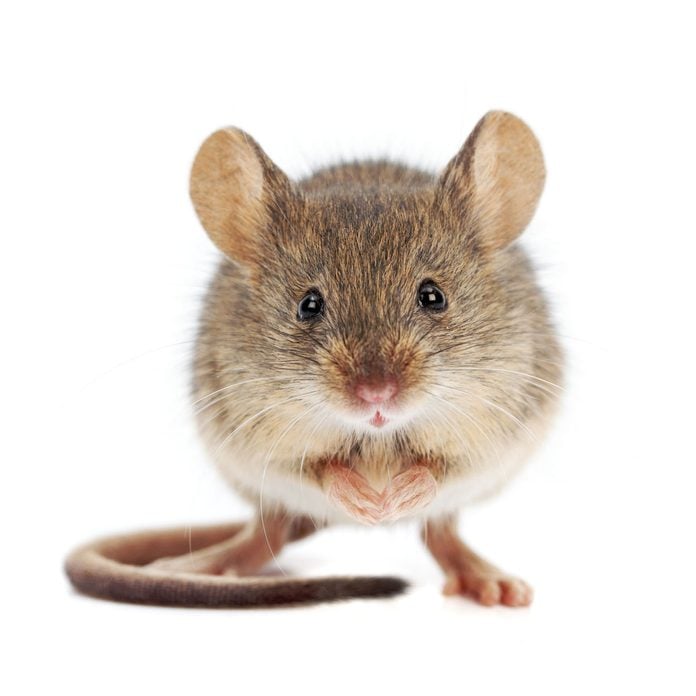
Firm Mouse (Mus domesticus)
Small, gray or calorie-free brown, and topped by Mickey-size ears, the house mouse is the about mutual invasive rodent institute across the U.S. Although information technology rarely grows longer than four inches, don't allow its modest size fool you lot. These ceaseless gnawers tin wreak havoc on your dwelling, and their rapid reproduction leads to a full-blown infestation in just weeks.
Cheque mutual nesting spots like attics or suspended ceilings, wall cavities, crawlspaces and kitchen areas (behind refrigerators, under stoves and inside cabinets and pantries). Look for telltale signs like gnawing marks, ane/iv-in. debris that are smooth with pointed ends, ammonia-like urine odor and tracks.
Prevention is the key to deterring these little pests, which can squeeze through an opening the width of a pencil. So regularly check and seal all gaps and cracks, from basement to rooftop.
three / 13
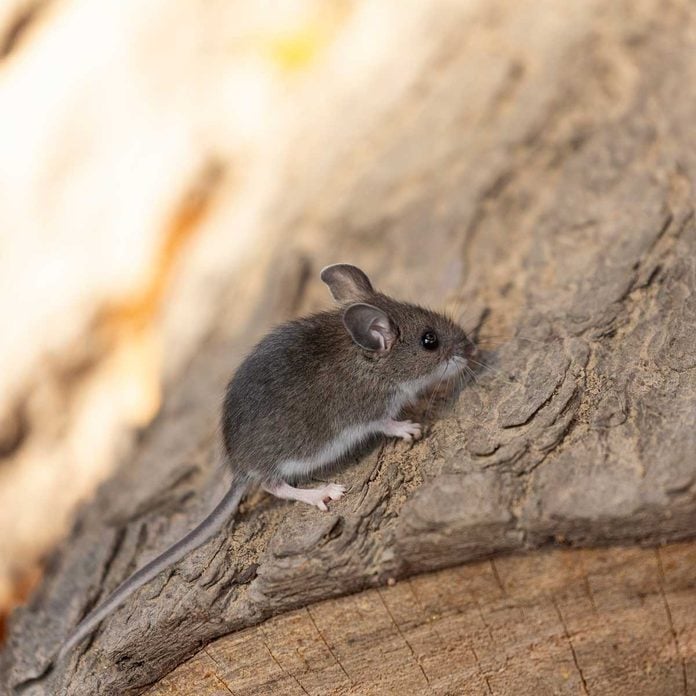
Deer Mouse (Peromyscus maniculatus)
This small dark-brown rodent lives outside in rural areas most of the twelvemonth but often takes shelter inside country houses and holiday homes when temperatures drop. Growing no longer than eight inches, deer mice can pass through a hole as pocket-size every bit a dime. They settle in attics or basements by gnawing nests into boxes or drawers, cushions and stuffed piece of furniture, and wall voids.
Deer mice are common carriers of the hantavirus, which can cause Hantavirus Pulmonary Syndrome for those who come into contact with their urine or carcasses. Be sure to properly seal your home before winter and use heavy gloves and a mask when setting and emptying traps.
4 / 13
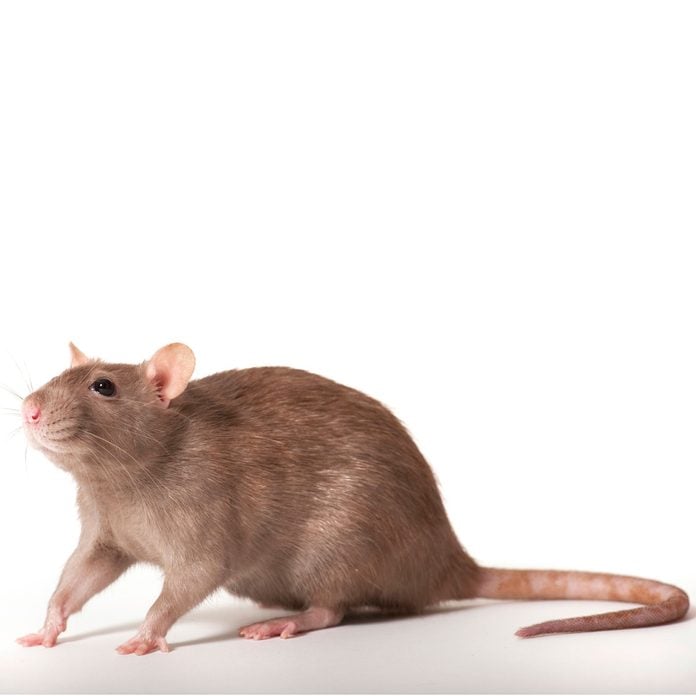
Norway Rat (Rattus norvegicus)
Growing up to x inches long, with another 10 inches of tail, this brown rodent usually known as a sewer rat is startling to come across indoors and out. These formidable pests can chew through almost any material — including PVC and metallic pipes — and fit through a pigsty as pocket-sized as a quarter. They nest in ground-level areas similar basements, crawlspaces, garbage cans and woodpiles.
Norway rats live across the U.South. and are known to be social animals, and then if you detect one nest in that location are likely to be others nearby. They also reproduce rapidly, giving nascence to a litter every two months.
These rodents bring with them serious health threats, as carriers of trichinosis, salmonellosis, rat-bite fever, jaundice and other diseases. To prevent attracting them well-nigh or into your dwelling house, place woodpiles or other droppings far away and carefully seal all holes and crevices along the foundation.
5 / thirteen
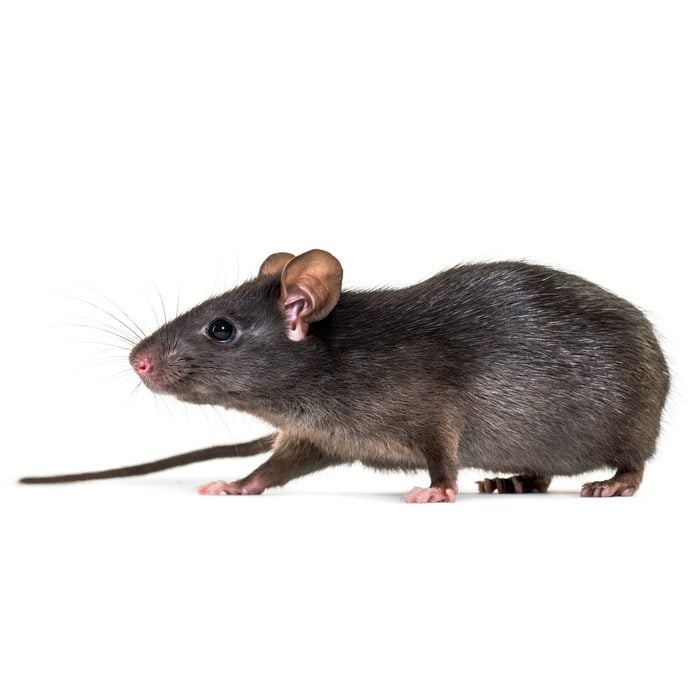
Roof Rat (Rattus rattus)
Smaller and darker than footing-dwelling Norway rats, roof rats (also known as black rats, firm rats, ship rats or fruit rats) tend to nest in attics or upper parts of buildings. Found primarily in the littoral and southern states, these night-brown or blackness rodents generally grow no larger than virtually eight inches long and accept a thinner, more elongated trunk than their heftier Norway cousins.
The most common signs of roof rat infestation? Shiny blackness debris that are soft and moist if fresh or hard and dried if old. equally well as scurrying noises from the cranium or walls, gnawed effects or wiring and tracks or grease marks along the lower walls or baseboards. Like Norway rats, roof rats alive in colonies, reproduce quickly, and bear parasites and diseases, including the bubonic plague.
Preclude infestations by advisedly sealing crevices and holes as minor as a nickel on the roof and upper parts of your abode.
6 / 13

Squirrel (Sciuridae)
The squirrel family comprises tree squirrels, footing squirrels and flying squirrels, likewise as chipmunks and prairie dogs. The about mutual culprit in home infestations is the tree squirrel, institute throughout the U.S. and recognizable by its greyness or tan fur and signature bushy tail.
Agile acrobats, squirrels tin can easily bound from tree limb to rooftop. So if you hear scurrying noises, come up beyond droppings or notice chewed and damaged entry points, y'all may have a squirrel nest in your attic.
Keep tree limbs trimmed far from your roof and seal holes and crevices to continue the neighborhood squirrels out. These skilled gnawers tin compromise heating and air conditioning systems, wiring, insulation, roofing, fascia, soffits and storage boxes. Never trap an creature and permit information technology dice in your attic. The carcass poses significant health and hygiene risks.
7 / 13
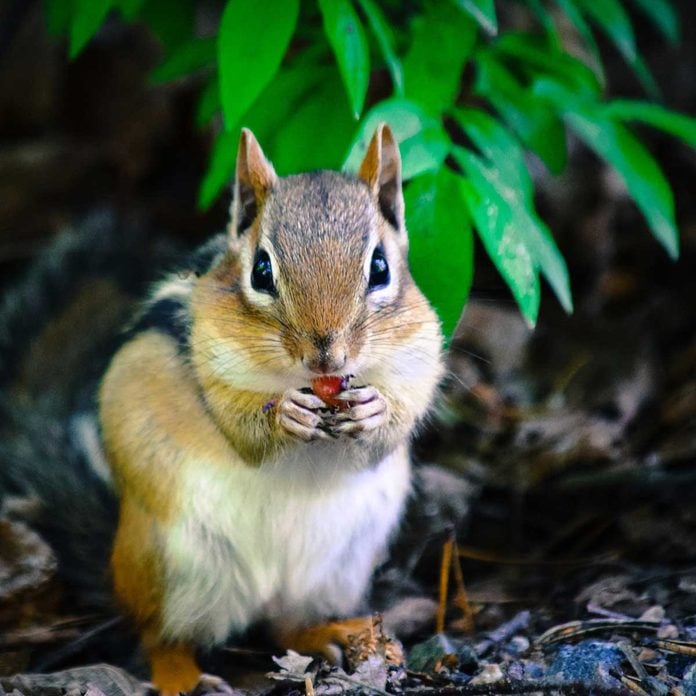
Chipmunk (Tamias striatus)
With their black-and-tan racing stripes, chubby cheeks and twitching tails, these squirrel cousins may seem harmless. Mutual in all fifty states, chipmunks aggressively gnaw to go along their incisors from overgrowing. If they go into basement or cranium spaces, they tin can chew through electrical wiring, pipes, insulation and flooring.
Avoid unwanted guests past limiting brush, sealing holes and crevices, installing a chimney cap and placing trash cans, bird feeders and vegetable gardens far from your domicile's foundation. If you encounter signs of infestation like chew marks or debris, call a professional pest command company, since chipmunks can comport multiple diseases.
8 / 13
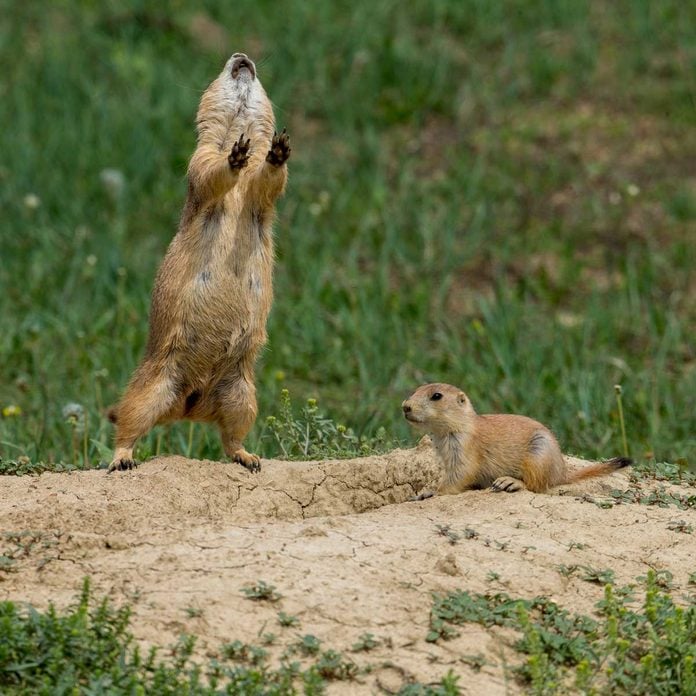
Prairie Domestic dog (Cynomys ludovicianus)
Native to the Great Plains, this member of the squirrel family unit is unlikely to damage your home only can devastate your one thousand and garden. Low-cal brown with a white belly and blackness-tipped tail, prairie dogs burrow underground in colonies. A single animal tin swallow upward to ii pounds of grass, flowers, shoots, roots and seeds a day, making brusque work of your lawn and vegetable garden.
Installing fences and hay bales that impede the animals' view of their surroundings discourages prairie domestic dog infestations. But keep watch for signs like a clutch of pocket-size holes in the ground, mounds of dirt and clipped vegetation.
nine / 13
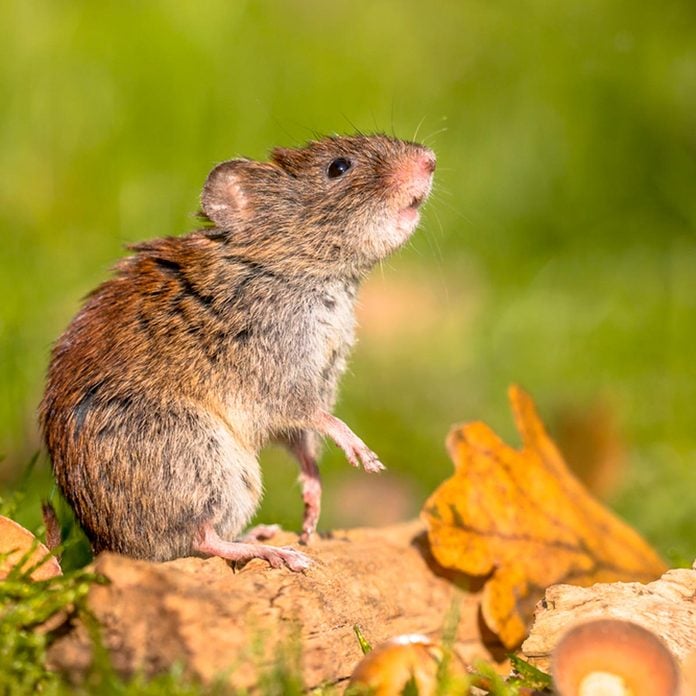
Vole (Microtus spp.)
Similar prairie dogs, voles compromise your grand and garden by burrowing extensive tunnel systems beneath the footing and feeding on roots, bulbs and small plants. Also known as meadow mice or field mice, these small brown or greyness rodents have a long mouse-similar tail, simply pocket-size optics and ears, and grow up to eight inches long.
At that place are dozens of species of voles across the U.S. Their rapid reproduction can quickly atomic number 82 to an infestation that spells problem for your holding. Keep your lawn and outdoor plants well trimmed and limit weeds and other wild vegetation to discourage voles.
ten / xiii
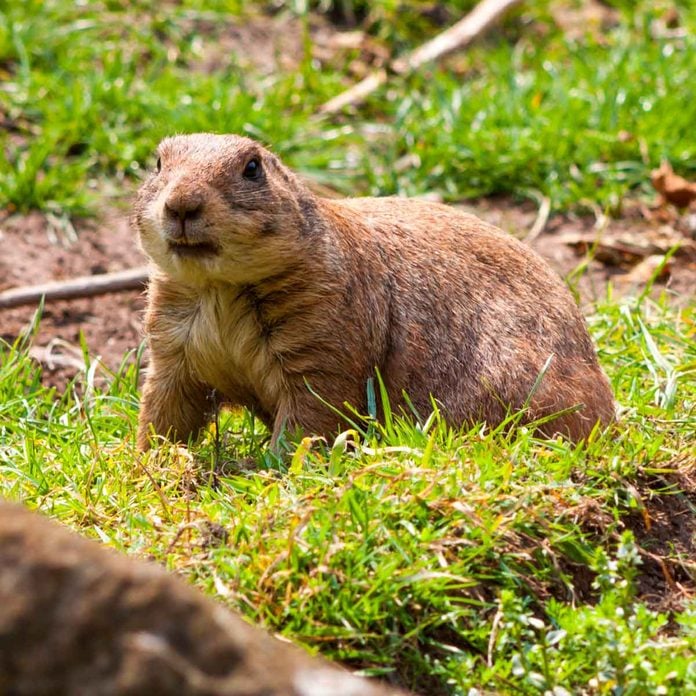
Gopher (Geomyidae)
If crescent- or horseshoe-shaped mounds of soil with small-scale circular holes start showing up in your m, you probably have a resident gopher. Common in most of the U.Due south., this pocket-size rodent tin be blackness to light brown in color and is frequently called a pocket gopher, due to its fur-lined cheek pouches.
Gophers alive in clandestine burrows made of connecting tunnels. They eat roots, bulbs and tree bark, all of which spells trouble for your lawn and garden. Gophers can have litters every few weeks, leading to a population boom that tin can quickly devastate your belongings.
11 / xiii
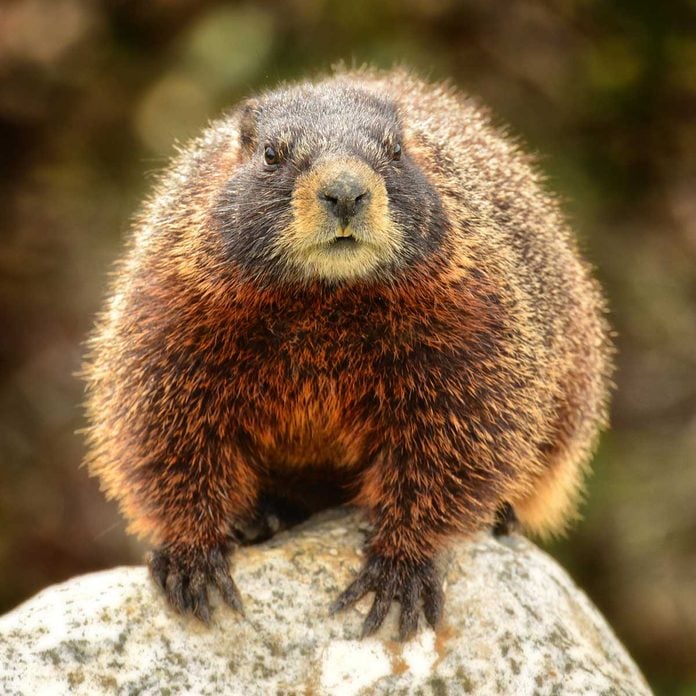
Groundhog (Marmota monax)
How much wood could a woodchuck chuck? Enough to make a serious dent in your trees and plants, if left to its ain devices.
Groundhogs, also known as woodchucks, are found in nearly states. Often mistaken for gophers, they are significantly larger and heavier than their beau burrowing rodents. Their chunky bodies are covered in grizzled brown fur and they can grow upwards to two feet long. Their forepart paws take long, curved claws for earthworks.
Although groundhogs can sometimes take shelter in crawl spaces and may gnaw through electric lines while tunneling, the more common threat they pose is to your lawn and landscaping.
12 / xiii

Porcupine (Erethizon dorsatum)
The third-largest member of the rodent family, porcupines live primarily in the western states and can exist easily identified by their long, spiky quills.
They rarely take up residence in residential areas, preferring to inhabit woods and wild grasslands, but their big ambition for bawl branches and vegetation can damage your landscaping. Plus, their sharp, needle-like spines are coated with an oily substance that irritates the skin if pricked.
13 / 13
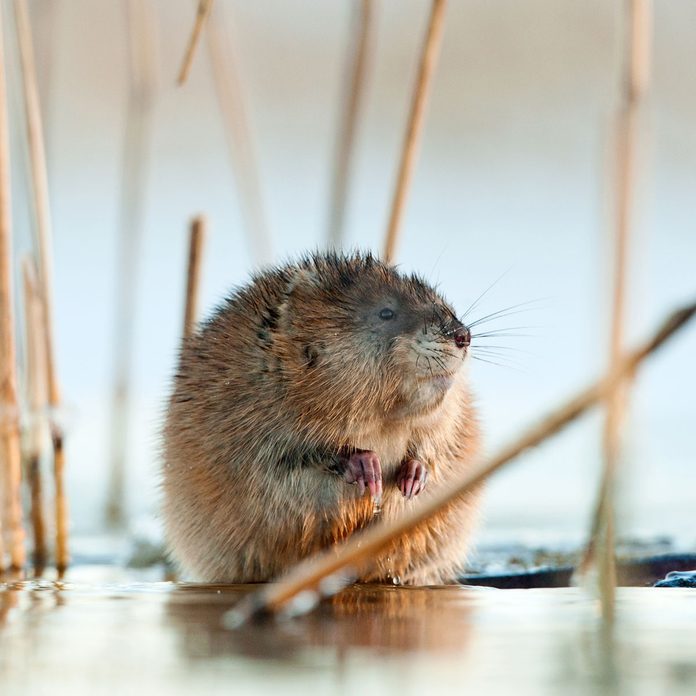
Muskrat (Ondatra zibethicus)
If yous live almost a body of water, you may come across a muskrat on your holding. This semi-aquatic brown rodent is named for its hairless tail and the musky odor of its urine. Muskrats grow to the size of a big rat, nigh twenty inches long.
Muskrats live in large colonies. Their vast network of underground burrows along the banks of waterways or ponds can lead to collapse and flooding. This, forth with their propensity to gnaw through tree bark and other vegetation, is a adept reason to discourage muskrats from taking upward residence on your holding.
Originally Published: December 17, 2020
Source: https://www.familyhandyman.com/list/how-to-identify-rodents-in-your-home-and-yard/
Posted by: cortezsedged.blogspot.com

0 Response to "What Animal Resembles A Mouse But Doesnt Have A Til"
Post a Comment